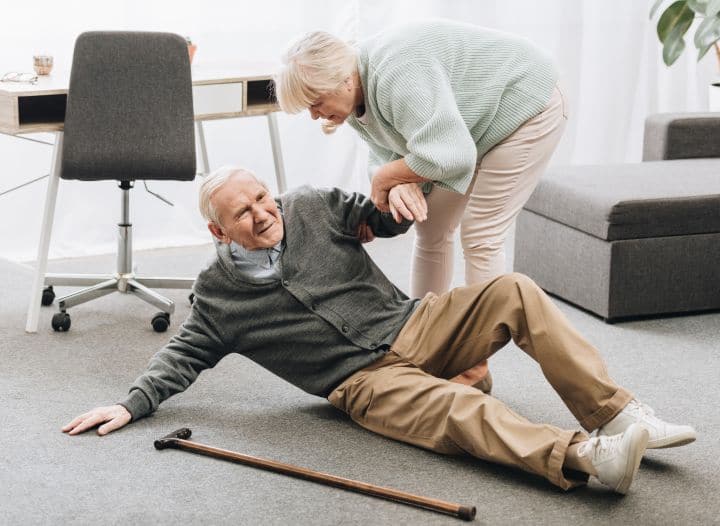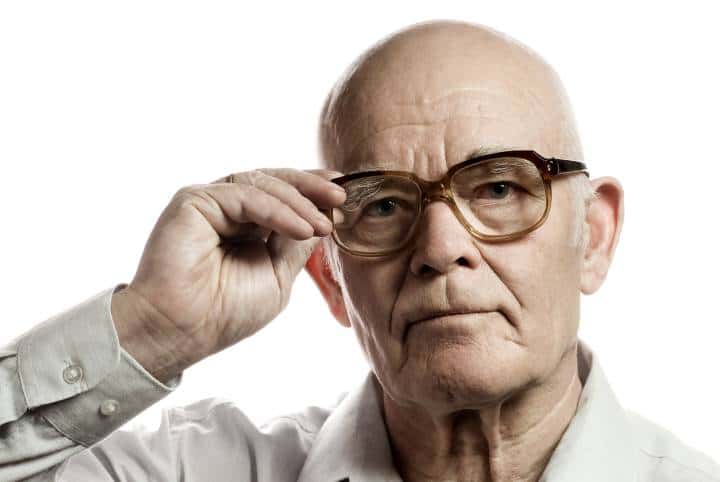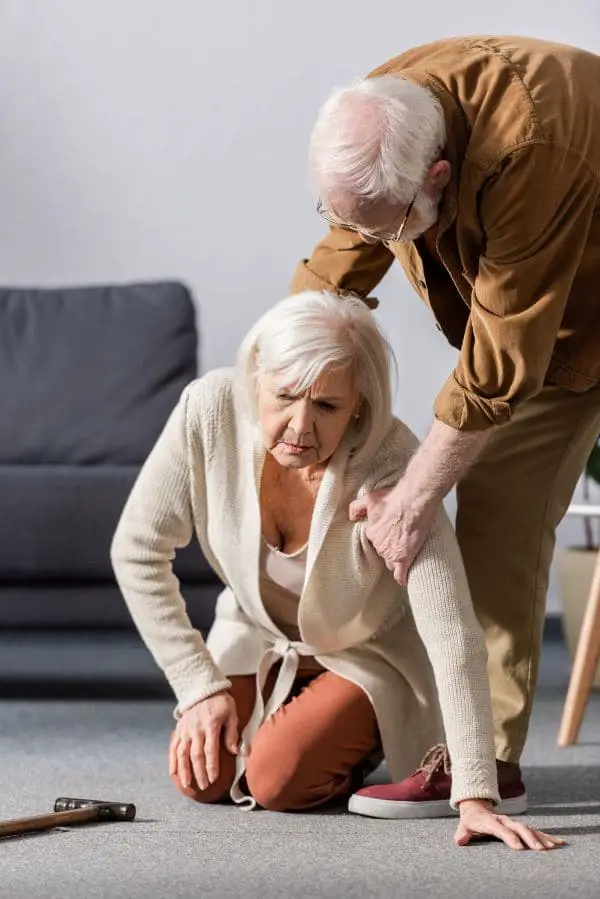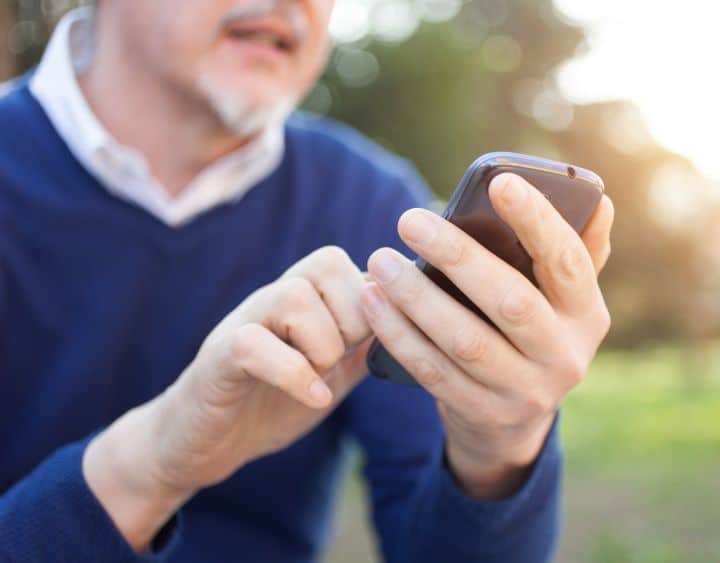Falls are a major risk of injury, fatal or otherwise, for the elderly. A large number of health issues and debilitating conditions are caused by falls.
In this article, we will discuss why it is important to be as careful as possible to prevent a fall and how you can reduce the likelihood of falls for your loved ones through fall risk education for the elderly.
Contents
As a caregiver, it is your responsibility to make the elderly understand the risks of falls in their daily activities, how to use certain devices to minimize that risk, and how to react in the unfortunate circumstance of a fall.
Some Fall Statistics
Falls are very common among the elderly. The following statistics from the U.S. Centers for Disease Control and Prevention (CDC) are quite scary and underline the importance of recognizing falls as dangerous, to say the least.
- 20% of falls result in serious injuries1
- In older adults aged over 65 years, 25 percent of the population experiences at least one fall every year2
- Even more astounding is the fact that every 11 seconds an elderly person is treated in the emergency care for a fall3
- Tragic as it is, every 19 minutes, an older adult succumbs to her injuries due to a fall. Not surprisingly, a large proportion of the deaths occur due to severe head injuries3
Without a doubt, falls are the single major cause of fatality and non-fatal trauma in the elderly.

What causes the elderly to fall?
As we age, our sensory abilities gradually reduce. Often, we develop musculoskeletal issues which result in hand tremors and limb instability. And finally, we may be suffering from partial or full immobility. While all these factors can be a cause for falls, the most common ones are as below.
Balance Problems
Balance problems can cause elderly people to feel dizzy and unsteady on their feet. Most balance problems are due to issues in the inner ear.
Symptoms of balance problems include:
- Vertigo
- Feeling faint or lightheaded
- Loss of balance
- Blurry vision
- Confusion
- Dizziness
If you have an elderly relative in the family who you’re concerned may have balance problems, they should see a doctor immediately, as this could save them from having a fall.
Poor vision
Eyesight tends to deteriorate with old age. Seniors should see an optometrist regularly to check for irregularities and maintain their overall health.
Some common age-related eye problems include:
- Cataracts
- Glaucoma
- Presbyopia
- Dry eyes
- Macular degeneration
Older adults, especially those with diabetes should get their eyes checked regularly and see a doctor immediately if they suddenly lose eyesight or have eye pain.

Health conditions
- Seniors who suffer from pre-existing health conditions can be at higher risk of falls.
- Health conditions that can increase the risk of falls include:
- Low blood pressure
- Dementia and Alzheimer’s Disease
- Parkinson’s Disease
- Cardiovascular Disease
An older adult with these conditions can be at higher risk of falls due to irregular heartbeats, confusion and feeling faint. They should see a doctor to make sure they are taking the right medication to lower the risk of falls.
Why is it important to prevent falls in the elderly?
For the elderly, falls can be fatal, or they may lead to traumatic injury or a fracture, or if you are among a lucky few, you can get away with a fall without any injury.
But even then, mentally you will develop a fear of falling, which may restrict your lifestyle. You would start avoiding activities like going out for a morning walk, and eventually increase risks of co-morbidities due to a sedentary lifestyle.
Besides, the financial burden on the healthcare system in the U.S. can also be substantially reduced by preventing falls in the elderly as much as possible. Fall victims invariably end up in the emergency or the intensive care unit leading to large medical bills.
Cost of Falls Among the Elderly
Cost to Individuals
Fall is an avoidable accident that can cause great loss or severe injury to a person. The fall can also make you financially weaker as the cost of treating a fall injury is expensive. Some injuries are not fatal and less costly.
However, according to statistics, fall patients spend $50 billion on medical costs and treatment related to non-fatal injuries due to falls. And for fatal fall injuries, patients spend $754 million in a year.

The cost for individual recovery from fall injury may vary from region to region. Many people and organizations help people who are suffering from non-fatal fall injuries by paying their medical costs.
Cost to Insurers
Medicare paid $29 billion, and Medicaid paid $9 billion for helping people. Other private donors also contribute to the cost of falls injury treatment for elderly people. The direct medical costs to treat injuries include doctor or hospital fees, nursing home care, rehabilitation, prescription medication, and community-based services.
Unaccounted Costs
These direct medical treatment costs do not cover long-term effects such as disability, household duties, and reduced quality of life.h However, they can help you recover smoothly without the worry of cost. To avoid being hospitalized due to non-fatal fall injuries, use special measures to prevent falls for older people.
Where do most falls occur in the elderly?
Falls can occur anywhere, but there are some places where a senior is at a higher risk of falling.
Bathrooms
Bathrooms can be problematic for seniors moving around because there are slippery surfaces. Falling over in the shower or on bathroom floors is dangerous for elderly people because they are more likely to cause serious injury to themselves on a hard surface.
Older adults have a slower reaction time so they’re less likely to put their hands out in time to stop a fractured leg, hip, or worse skull.
Ladders
Seniors shouldn’t be climbing ladders, but sometimes it’s impossible to get your elderly parents to listen. Falling off a ladder can cause serious injury.
If you’re concerned about the safety of your senior parents on ladders, at least suggest being there to stand down the bottom of the ladder or have someone else present who can watch them at all times. At the minimum, they can use ladders meant for seniors.
Trip hazards
Whether there are cords or rugs lying on the floor or objects that haven’t been tidied up, these can cause serious injury to seniors in the home. Outside the home, there are even more trip hazards including gardening tools or hoses.
To a younger person, these items may not seem dangerous but to an older person, they can have some very serious consequences.

How can you reduce the risk of falls in the elderly?
Depending on the relevance of the major reasons in your case, the risk of falls in the elderly can be minimized in the following ways
Do regular exercise
- It pays to be as physically active as possible in your old age through light physical exercises like yoga and walking. Regular exercise will go a long way in strengthening your lower body muscles and prevent cardio-vascular diseases as well as musculoskeletal conditions. This will significantly reduce your chances of a fall due to dizziness or stroke – the two most lethal reasons behind falls in the elderly.
- In case you are mobility challenged it is always a good idea to take the support of crutches or a manual wheelchair to move around inside the house. If you are headed out, you should consider using a wheelchair for outdoors.
- Always get enough sleep so that you do not feel disoriented during the day
- If you are prone to low blood pressure, always try and get up slowly from a supine or sitting position to avoid sudden dizziness.
Make your home safe
The easiest way to prevent falls is keeping the floor free of clutter. Put books and newspapers in drawers or on a bookshelf and make sure all kitchen appliances are stored away in cupboards
- Minimize steps between rooms. You can use ramps to make it easier to move between rooms that are on different levels.
- Consider making your bathroom elderly-friendly. While it is a reasonable investment, bath tubs for the elderly can be a great, safe bathing option.
- Restrict water-spill from shower area of the bathroom; If there is a spill, ensure that you clean and dry it immediately. A very effective solution for slippery surfaces is to wear a rubber-soled, anti-skid slipper at home
- Use anti-slip bath mats and bath lifts in the bathroom
- Install railings and support rods as frequently as possible in your home and wherever necessary, like staircases and bathrooms and showers.
- Install enough lights so that no area is dark.
- All electrical, cable or cords should be neatly rolled up, tied, and placed in corners to avoid them being in somebody’s way. If they can not be removed, they should be firmly taped to the floor.
- Even out loose rug ends and and make them flush with the floor as much as possible.

Remove Trip Hazards From the House
When you live alone or with someone, you should make your environment safer by looking around and removing any hazardous objects you may find.
Try removing these items from your kitchen, room, bedroom, washroom, hallways, and stairways, including:
- Remove any boxes, newspapers, magazines, phone chargers, and electrical cords from hallways and rooms.
- Avoid placing coffee tables, plant stands, and magazine or book racks in high-traffic areas.
- Repair loose, wooden floorboards immediately.
- Clean any spilt liquids and foods right away.
- Use non-slip mats in your bathroom.
- Store clothing, bathing stuff, dishes, and other necessary items within easy reach.
Lighting solutions to prevent falls
At home, lighting issues are a leading factor for falls in older adults. A senior can trip over clutter in the dark corner due to bad lighting or no lights. However, there is a way to use a home automation system to reduce falls for older people.
Intelligent motion sensors help seniors to light their room where they are. It turns on or off without a person’s help. The lights also turn on or off via the schedule of the home automation system.

Apart from direct home automation, simple lighting solutions can also be a great way to reduce fall risk. When you live alone, it is crucial to have proper lighting as bad lighting at home increases the risk of falls for elders. Doctors advise keeping your home bright to avoid tripping over something and prevent falls. Doctors also recommend to:
- Place night lights in the bedroom and the other rooms.
- Make sure to clear paths of the switchboard in the room. Keep anything away from the way that causes disturbance. You can also add glow-in-the-dark switches to see the button in the dark.
- Place a lamp near your bed that you can use in the middle of the night.
- Turn on the lights when you go up or downstairs.
- Keep a flashlight in your house and also store it in an easily accessible place.
With home automation, you can set and maintain your home and help you efficiently provide items. It drastically reduces the risk of falls for older adults by reducing their need to travel around the house.
However, this method is still hard to properly run and may cause minor accidents such as burns or fire.
Remote monitoring and video cameras
Video cameras and monitors can help caregivers keep a 24 x 7 tab on older people who are at risk of falls. There are bedside mats and other alarms that tell you when an older person is getting up at night and might need a bit of support.
Similarly, with video cameras family members might be able to monitor if a senior is becoming a bit wobbly or is losing balance, and can immediately help them.
If you have an extra baby monitor, you can use that to monitor a senior and keep them safe.
Wear a health monitor watch
A personal alarm is critical in supporting seniors living on their own. There are a number of different types including health monitor watches that can detect falls.
These watches can provide seniors and their families peace of mind as they go about their day. If the elderly person experiences a fall and is unable to move, she can activate their personal alarm to get in contact with an emergency response center in order to get help quickly.
Speak to the right people
Older adults are sometimes reluctant to discuss their old age and fears of having a fall but speaking openly to a doctor about your concerns can be vital for fall prevention. It’s a good idea to review all your medication and pills. It is a good idea to discuss any side effects that they may be having such as dizziness or sleepiness.
It’s also important to get your eyes checked regularly and have your feet checked. Proper footwear can also reduce the chances of falls.
Remember that everyone gets old. It’s the only thing that’s certain in life. It’s perfectly fine to need help every now and then.
Make sure you are taking the recommended dose of medication
According to Dr Brandy Archie, taking an overdose or an underdose of any medication may cause dizziness or lightheadedness. This can lead to falls.
To ensure that you are taking the right dose of your medication and on time, use a pillbox with an alarm. It will dispense the right dose of medication and remind you when to take it.
How can an elderly person get up after a fall?
For the elderly, getting up after a fall is an arduous task. If the fall is on a hard surface, there is a high chance that the person will be unconscious or stunned and she would require emergency assistance. In the fortunate event that she has been spared any serious injury, it is still difficult for her to get up due to likely weakness in joints and muscles.
You should always have emergency numbers stored in one-key dialing mode on your phone for such emergencies.

As a caregiver, you should emphasize the following steps to be followed while rising after a fall:
- Try to get a hang of your injuries, if any. If you are in serious pain, you should not try and get up, rather call for help.
- You should not try and stand on your own. Carefully evaluate your lower body strength and assess whether you can lift yourself up using support and sustain your weight. If yes, look around for sturdy support like a railing or heavy piece of furniture
- Slowly move towards the support and lift your upper body first. If there is a chair nearby you should move towards it, to avoid your lower body bearing your full body weight. Rest for some time before being on your feet
You should discuss the fall with your caregiver and physician for them to assess your post-fall health. Also, as a caregiver, you should analyze the cause of your fall and take steps to prevent such situations in the future.
Elderly fall prevention devices
Fall risk can be significantly reduced by adopting the use of a range of fall prevention devices available for elderly support. From protective wearables, mobility aids, installable supports to non-slip footwear and bathroom aides, fall prevention devices and supports can help your elderly loved one navigate those tricky years of life safely.
- Mobility aids: Depending on your stage of mobility challenge, you may invest in a cane or a quad cane. If you can stand but find it difficult to walk, you may want to use a walker or a rollator. In case, you are temporarily not being able to walk or severely mobility challenged, a manual transport wheelchair may be the right device for you. Mobility aids are extremely reliable in preventing falls or at least reducing the likelihood in a vast number of scenarios.
- Bathroom aids and support bars: Bathing aids like shower chairs take out the risk of falling due to slippery baths and so does a good quality bath or shower mat. Support bars installed at the right places in the bathroom also go a long way to reduce fall risks by lending your ready support through your bathroom routine. Toilet aids like a safety frame for the commode or a raised toilet seat with handles are good accessories that provide support while using the toilet.
- Protective wearables and footwear: A large number of falls result in hip fractures. This can be prevented if you are wearing a hip protector or hipster – a padded hip guard that absorbs the impact of your fall. While this prevents injury from falling, non-slip shoes and socks with grip reduce the likelihood of falling on plain surfaces and while climbing stairs.
- Installable supports: These are railings and bars which you should look at installing throughout your home to allow for the elderly to take support by holding onto one whenever possible. Examples include railings on staircases and passages, as also on walkways in the garden or just outside your home
Does Fall Risk Education Work?
Centres for Disease Control and Prevention studies on falls and their risk factors lead to many valuable ways to prevent falls for older adults as CDC found falls more common in elderly adults. The researchers conducted a quasi-experimental study in two communities.
The study’s objective was to analyze the effect of health education programs on fall-risk prevention among community-dwelling older adults. The researchers divided the group of 216 people into two groups of 108 individuals each (one group for intervention, the other as a control sample)

All participants were above 65 and registered in the same setting. The researchers formed structured questions significant to the quality of life, and they used fall risk assessments tools to collect general and specific information.
After a period of six months, the intervention and control groups were tested again for fall risk, and the researchers concluded that the intervention group had a lower likelihood of fall risk.
In conclusion, prevention education is found useful. Caregivers and nurses use doctors’ instructions to prevent fall risks in their patients.
They use a balance impairment program, right medicines usage, and proper care that help decrease the risk of falls. These measures that doctors use are also suitable for public health initiatives.
Conclusion
All of us have been hearing this from our childhood, that, prevention is better than cure. There is probably no better example where this fits perfectly. Falls can be prevented by a combination of methods and devices that we have discussed above and goes a long way towards maintaining an active lifestyle for your elderly loved one.
All of us should be aware of these methods and implement them as and when required to minimize the instances of falls – a menace for the elderly.
References
